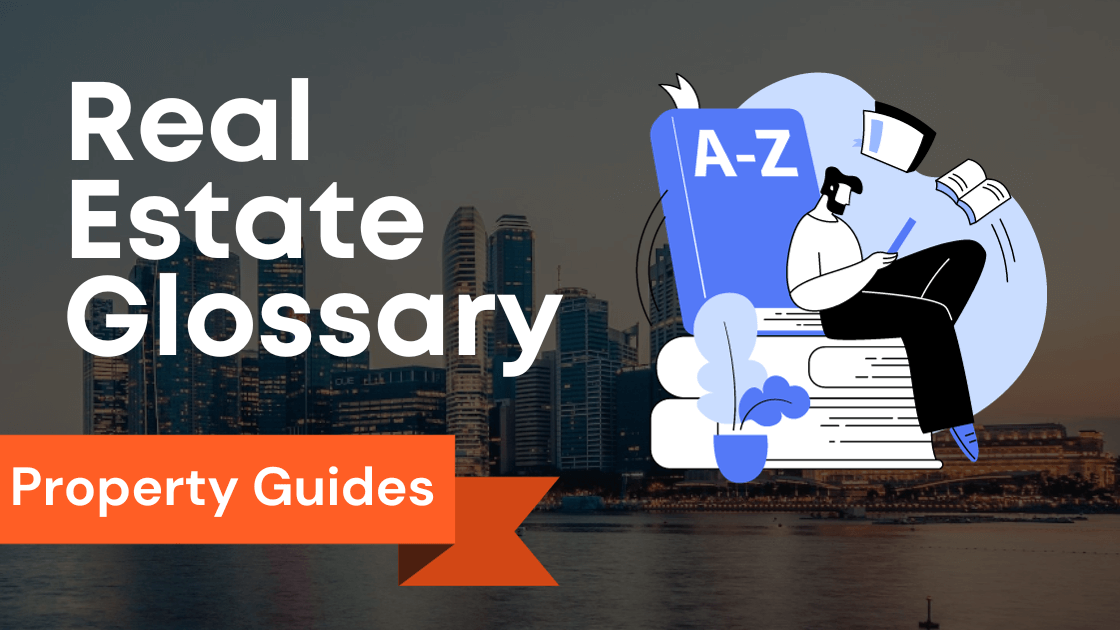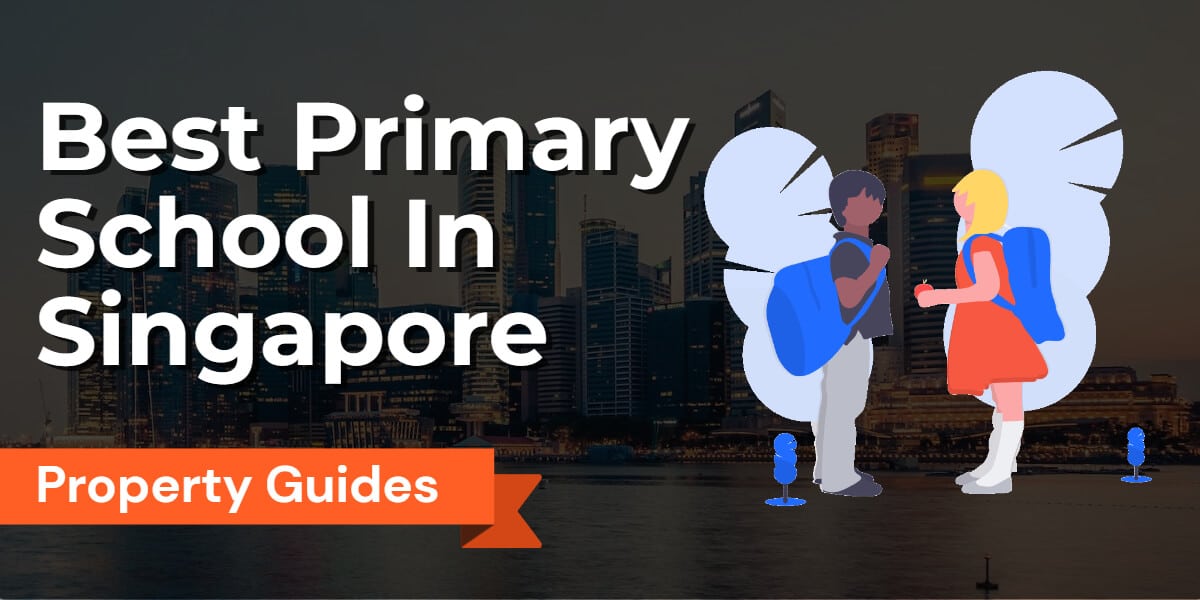Introduction to Development Charge Rates in Singapore

Development charge rates play a crucial role in Singapore’s real estate market.
As the city-state continues to experience rapid development and urbanization, understanding these rates becomes essential for developers, investors, and homeowners alike.
In this article, we will explore the concept of development charges and their significance in Singapore, as well as delve into the intricacies of charge rates and their revisions.
Understanding Development Charge and its Significance in Singapore
A development charge is a fee imposed by the government when developers enhance the use of a piece of land or increase its plot ratio.
It is a means for the government to capture a portion of the land’s increased value due to changes in land use or improved development potential.
The funds collected through development charges contribute to infrastructure development and urban planning initiatives.
The significance of development charges in Singapore lies in their role in managing land use and encouraging sustainable development.
By implementing the charge, the government ensures that land resources are utilized effectively and in line with urban planning objectives.
Additionally, development charges provide a source of revenue that supports the city-state’s ongoing infrastructure enhancements, such as transportation networks, parks, and community facilities.
Explanation of Development Charge Rates and Revisions
Development charge rates are determined based on various factors, including the location, land use category, and proposed increase in intensity of land use.
The rates are periodically reviewed and revised by the Urban Redevelopment Authority (URA) to reflect market conditions and changes in land values.
When revising development charge rates, the URA considers factors such as prevailing property market conditions, land use policies, infrastructure spending, and the economic outlook.
The aim is to strike a balance between facilitating development and capturing a reasonable share of the land value appreciation for public benefit.
It is important to note that development charge rates differ across different land use zones in Singapore.
For example, commercial zones may attract higher charges due to their higher development potential and prime locations, while residential zones may have lower charges.
These rates are published in the URA’s Development Control Handbook, providing transparency and guidance for developers and property owners.
http://www.youtube.com/watch?v=nKgj-DN38d0
In conclusion, development charge rates in Singapore serve as a mechanism for managing land use and capturing a portion of the increased land value resulting from development.
They contribute to the sustainable growth and development of the city-state by funding infrastructure projects and supporting urban planning initiatives.
Understanding the concept of development charges and the intricacies of charge rates is crucial for stakeholders in the real estate industry to navigate the dynamic Singaporean market effectively.
Key Takeaways
- Development Charge Purpose: Development charges in Singapore are fees imposed by the government to capture a portion of the land’s increased value resulting from changes in land use or development potential. These charges contribute to infrastructure development and urban planning initiatives.
- Managing Land Use: Development charges play a significant role in managing land use and encouraging sustainable development. The government uses these charges to ensure effective utilization of land resources in line with urban planning objectives.
- Charge Rate Factors: Development charge rates vary based on factors such as location, land use category, and proposed increase in intensity of land use. The Urban Redevelopment Authority (URA) periodically reviews and revises these rates to reflect market conditions and changes in land values.
- Location Matters: Prime locations with high demand, such as city centers and areas near business districts, typically have higher development charge rates. Desirable locations attract higher charges to capitalize on development potential and market value.
- Property Size Influence: The size of a property also affects the charge rates. Larger properties offer more development potential, leading to higher charges. Smaller properties generally have lower rates due to limited development potential.
- Implications for Developers: Higher development charge rates translate to increased costs for land acquisition and development, impacting the financial feasibility of projects. Developers should assess the profitability of ventures considering these charges.
- Implications for Homebuyers: Homebuyers need to consider the impact of development charge rates on property prices, especially in prime locations. The added cost should align with location desirability and potential returns on investment.
- Market Alignment: Regular revisions of development charge rates align the charges with current market conditions, preventing speculation and promoting transparency and trust in the property market.
- Supporting Sustainable Development: Revising charge rates encourages sustainable development practices by reflecting the potential returns on investment and incentivizing efficient land use.
- Influences on Rates: Factors such as demand, economic conditions, infrastructure development plans, and feedback from industry experts influence the revision of development charge rates, ensuring a fair and transparent property market.
Development Charge Rates in Singapore

Development charge rates in Singapore are fees imposed on property owners who wish to embark on new development or building projects.
These charges are levied based on the floor area of the proposed development and are used to fund the provision of essential services and facilities such as roads, transportation facilities, and ambulance services.
The development charge rates vary depending on the type of development.
For residential units, the charges are calculated based on the type of dwelling unit and the region in which the property is located.
Different rates apply for detached dwellings, multi-family residential dwellings, and high-rise residential buildings.
For non-residential development, such as industrial buildings, offices, and institutional facilities, the charges are determined by the floor area of the building.
Commercial projects, retail developments, and mixed-use buildings also have their specific rates.
Development charge rates are reviewed periodically and are subject to amendment.
Property owners are required to pay the development charge at the time of building permit issuance, with the payment being made in annual installments over a specified period.
The rates effective at the time of building permit application are applicable.
In certain cases, development charge discounts or exemptions may be granted based on factors such as affordable housing projects or purpose-built rental buildings.
Demolition credits may also be provided for the removal of existing structures.
Applicable interest rates, based on the prime rate, are charged on the outstanding balance of the development charge payment.
The property owner is required to pay a reimbursement fee should the development charge be reduced in the future.
The calculation of the development charge is based on the project valuation and a list of capital projects.
The City-Wide Development Charges Deferral allows property owners to defer the payment of development charges for a limited period.
To ensure transparency, a development charges background study is conducted, and a development charges pamphlet is made available to provide information on the charges and their purpose.
Interested parties can also request a development charge quotation or seek clarification on the charges from the relevant authorities.
In summary, development charge rates in Singapore are an essential tool for funding the growth and development of the city.
These charges vary depending on the type of development, and property owners are required to pay them at the time of building permit issuance.
Overview of development charge rates in 2022
Singapore’s development charge rates for 2022 play a significant role in the city-state’s real estate market.
These rates, determined by the Urban Redevelopment Authority (URA), reflect the evolving market conditions and changes in land values.
Developers, investors, and homeowners need to understand these rates to make informed decisions regarding property development and investments.
The development charge rates for different land use categories are published in the URA’s Development Control Handbook.
These rates vary depending on factors such as location, land use category, and proposed increase in intensity of land use.
The rates are periodically reviewed and revised to ensure they reflect market conditions accurately.
Breakdown of development charge rates for different property types
The development charge rates in Singapore vary for different property types.
Let’s break down the rates for two commonly encountered property types: landed residential and non-landed residential.
For landed residential properties, the development charge rates are determined based on factors such as the size of the land and its plot ratio.
These rates vary across different zones and are generally higher in prime locations with higher development potential.
On the other hand, non-landed residential properties, such as apartments and condominiums, have their development charge rates based on the gross plot ratio.
These rates are generally lower than those for landed residential properties.
Comparison of development charge rates for landed residential and non-landed residential properties
Comparing the development charge rates for landed residential and non-landed residential properties reveals some interesting differences.
Landed residential properties, which typically occupy larger land areas, tend to have higher development charge rates.
This is due to their potential for greater development intensity and value appreciation.
On the other hand, non-landed residential properties, which are more commonly found in high-rise buildings, have comparatively lower development charge rates.
This reflects their smaller land footprint and generally lower development potential.
It’s important to note that these rates are subject to change based on market conditions and revisions made by the URA.
Developers and property owners should stay updated with the latest development charge rates to make informed decisions about their projects and investments.
http://www.youtube.com/watch?v=dqW6ZvF8kJ4
In conclusion, development charge rates in Singapore play a crucial role in the real estate market.
These rates are periodically reviewed and revised to ensure they accurately reflect market conditions and changes in land values.
The rates vary for different property types, with landed residential properties generally having higher rates due to their larger land footprint and higher development potential.
Non-landed residential properties, on the other hand, have comparatively lower rates reflecting their smaller land area and lower development intensity.
Understanding these rates is essential for stakeholders in the real estate industry to navigate the Singapore market effectively and make informed decisions regarding property development and investments.
Largest Increase in Development Charge Rates

Highlighting the Property Types with the Largest Increase in Development Charge Rates
In the recently released data on development charge rates in Singapore, certain property types have seen a significant increase in charges.
These property types include both landed and non-landed residential properties, as well as commercial properties like office buildings and retail spaces.
The development charge rates for these property types have experienced a substantial rise compared to previous years.
Among the property types with the largest increase in development charge rates are landed residential properties.
These properties, which typically offer larger land areas, have seen a marked surge in charges.
This increase is primarily due to their higher development potential and appreciation in value.
The larger land areas allow for greater development intensity, leading to a rise in charges to reflect this potential.
Non-landed residential properties, such as apartments and condominiums, have also witnessed an increase in development charge rates, although to a lesser extent compared to landed properties.
The smaller land footprint and lower development potential of these properties contribute to the relatively lower increase in charges.
However, it is still important for developers and property owners of non-landed residential properties to be aware of these changes when planning their projects or assessing investment opportunities.
Commercial properties, including office buildings and retail spaces, have experienced a notable rise in development charge rates as well.
This increase can be attributed to the greater demand for such properties in prime locations and the potential for higher returns on investments.
The increasing development charge rates act as a reflection of the growing market value of commercial spaces and the potential for significant development in these areas.
Factors Contributing to the Significant Rise in Development Charges
Several factors contribute to the significant rise in development charges across property types in Singapore.
One major factor is the continuously evolving market conditions, which are influenced by various economic and demographic factors.
These changing conditions directly impact the land values and development potential of properties, leading to adjustments in development charge rates.
Additionally, urban planning policies and government regulations play a crucial role in determining development charge rates.
The Urban Redevelopment Authority (URA) regularly reviews and revises these rates to ensure they accurately reflect the market conditions and changes in land values.
The aim is to strike a balance between encouraging property development and investment while considering the broader needs of the city-state.
Another factor contributing to the rise in development charges is the demand for prime locations.
As areas with high growth potential become increasingly sought after, the development charge rates in these regions see a corresponding increase.
This is due to the higher value and potential returns associated with properties located in prime areas.
Impacts on Developers and Property Owners
The rise in development charge rates has significant implications for developers and property owners in Singapore.
For developers, it means higher costs for land acquisition and development.
The increased charges may influence decisions on whether to proceed with certain projects or investments and can impact the overall profitability of a development venture.
Developers need to carefully assess the financial feasibility of their projects in consideration of these higher charges.
Property owners, on the other hand, need to be aware of the potential impact on the value of their properties.
The increase in development charge rates can affect the overall market value of properties, particularly those in areas with significant rate hikes.
Property owners should stay informed about the latest charge rates and understand how these changes may impact their investment portfolios or potential resale values.
In conclusion, the latest data on development charge rates in Singapore indicates a significant rise in charges for various property types, including landed and non-landed residential properties, as well as commercial properties.
These changes are influenced by evolving market conditions, urban planning policies, and the demand for prime locations.
The impact of these higher charges is felt by developers and property owners, who need to carefully consider the financial feasibility and potential value implications of their projects and investments.
Staying informed about the latest development charge rates is crucial for navigating the Singapore real estate market effectively and making informed decisions regarding property development and investments.
Analysis of Non-Landed Residential Properties

In-depth examination of development charge rates for non-landed residential properties
To gain a better understanding of the development charge rates for non-landed residential properties in Singapore, it is crucial to examine the specific factors that contribute to these rates.
The development charge rate for non-landed residential properties takes into account various considerations, including location, property size, and potential development intensity.
The charge rates for non-landed residential properties are determined based on the potential increase in land value resulting from the development potential of the property.
In general, areas with higher development intensity and growth potential tend to have higher charge rates.
The examination of charge rates for non-landed residential properties reveals that certain locations command higher rates due to their desirability and market demand.
Areas with proximity to amenities such as schools, shopping malls, and transportation hubs are often considered prime locations and, consequently, have higher charge rates.
These prime locations offer greater convenience and are more attractive to potential homebuyers.
Additionally, the property size plays a significant role in determining the development charge rates.
Larger properties typically have higher development potential and can accommodate more units or facilities, leading to higher charge rates.
On the other hand, smaller properties may have relatively lower charge rates due to their limited development potential.
Explanation of the varying rates based on different locations and property sizes
The varying development charge rates based on different locations and property sizes reflect the market dynamics and value appreciation associated with specific areas and property types.
Locations with high growth potential and strong demand, such as city centers or areas near business districts, often command higher development charge rates.
The demand for properties in these locations is driven by factors such as proximity to job opportunities, amenities, and transportation networks.
As a result, developers and homebuyers can expect to pay higher charges to capitalize on the development potential and market value of these prime locations.
Property sizes also influence the charge rates.
Larger properties offer more development opportunities, such as building more units or incorporating additional facilities.
The larger development potential leads to higher charge rates to reflect the increased value and potential returns.
Conversely, smaller properties have limited development opportunities, resulting in relatively lower charge rates.
The variation in charge rates based on location and property size allows for a more nuanced approach to property development and investment.
Developers and potential homebuyers can evaluate the cost-benefit analysis of each project or purchase, considering both the charge rates and the potential returns based on location and property size.
Implications for developers and potential homebuyers
The implications of development charge rates for developers and potential homebuyers in Singapore’s non-landed residential property market are significant.
Developers need to carefully consider the financial feasibility of their projects in light of the charge rates.
Higher charge rates increase the costs associated with land acquisition and development.
Developers may need to adjust their development plans or strategies to ensure profitability in the face of higher charges.
Developers must conduct thorough market research and financial analysis to assess the viability of projects and determine the potential returns before committing to investments.
For potential homebuyers, understanding the implications of development charge rates can help in making informed decisions.
Higher charge rates may translate to higher property prices in prime locations or for larger properties.
Homebuyers need to evaluate whether the added cost is justified by the location’s desirability and growth potential or the property’s development potential.
It is important to consider long-term value appreciation and the potential returns on investment when making purchasing decisions.
In conclusion, the analysis of development charge rates for non-landed residential properties in Singapore provides valuable insights for both developers and potential homebuyers.
The rates vary based on location and property size, reflecting the market dynamics and potential returns associated with specific areas and properties.
Developers need to carefully consider the financial feasibility of projects, while potential homebuyers need to evaluate the implications on property prices and investment returns.
By staying informed and conducting a thorough analysis, both developers and homebuyers can navigate the non-landed residential property market effectively and make informed decisions.
Revision of Development Charge Rates

Insights into the revision process of development charge rates in Singapore
The revision process of development charge rates in Singapore is a crucial aspect of maintaining a fair and equitable property market.
The government regularly reviews and updates these rates to ensure they align with market conditions and reflect the value of land in different areas.
This revision process involves several key steps and considerations.
Firstly, the government takes into account various factors when revising development charge rates.
These factors include market demand, economic conditions, and infrastructure development plans.
By analyzing these factors, the government can determine the appropriate adjustments to the charge rates.
The revision process also involves consultation with industry experts and stakeholders.
The government seeks input from real estate developers, property analysts, and other relevant parties to gather insights and perspectives on market trends and dynamics.
This collaborative approach helps ensure that the revised charge rates accurately reflect the current market conditions.
Additionally, the revision process includes a careful evaluation of the development potential of different areas.
The government assesses the potential returns on investment for developers and considers factors such as location, amenities, and transportation networks.
This evaluation helps determine the appropriate level of charges for each location based on its market desirability and growth potential.
Factors considered when revising development charge rates
Several factors are taken into consideration when revising development charge rates in Singapore.
These factors play a significant role in determining the appropriate charges for different locations and property types.
One key factor is the demand for properties in specific areas.
Prime locations with high demand, such as city centers and areas near business districts, often command higher charge rates.
The popularity of these locations is driven by factors such as proximity to job opportunities, amenities, and transportation networks.
The government considers the desirability and market value of these locations when revising the charge rates.
Infrastructure development plans also influence the revision process.
Areas that are slated for significant infrastructure projects, such as new transportation networks or commercial developments, may see revisions in their charge rates.
The government takes into account the potential impact of these projects on the value of land in these areas and adjusts the charges accordingly.
Economic conditions are another important factor considered during the revision process.
The government assesses the overall economic climate, including factors such as GDP growth, employment rates, and inflation.
These economic indicators provide insights into the market conditions and help determine the appropriate level of charges that can sustain a healthy property market.
Lastly, the government considers the feedback and insights from industry experts and stakeholders.
These inputs provide valuable perspectives on market trends, customer preferences, and the viability of different types of developments.
By incorporating these insights, the government can make more informed decisions when revising the charge rates.
Importance of regular revisions for maintaining a fair and transparent property market
Regular revisions of development charge rates are essential for maintaining a fair and transparent property market in Singapore.
These revisions ensure that the charges accurately reflect the value of land and the market dynamics in different areas.
Here are some key reasons why regular revisions are important:
- Market Alignment: By regularly revising the charge rates, the government can align the charges with the current market conditions. This ensures that developers and homebuyers pay a fair price for the development potential of the land.
- Prevention of Speculation: Regular revisions help prevent speculative activities in the property market. When charge rates are outdated or do not accurately reflect the market value, it can create opportunities for speculation and artificially drive up property prices. By keeping the charges in line with market conditions, these speculative activities can be minimized.
- Transparency and Clarity: Regular revisions enhance transparency and clarity in the property market. Developers and homebuyers can have a clear understanding of the charges and how they are determined. This transparency promotes trust and confidence in the market.
- Support for Sustainable Development: By revising the charge rates, the government can incentivize sustainable development practices. Adjusting the charges to reflect the potential returns on investment encourages developers to consider sustainable design, efficient land use, and environmentally friendly practices.
Overall, regular revisions of development charge rates ensure a level playing field in the property market, foster transparency and trust, and support sustainable development practices.
By keeping the charges up-to-date, the government can maintain a fair and transparent property market that benefits all stakeholders.
Conclusion
In conclusion, the development charge rates in Singapore have seen some significant changes in recent times.
The increase in DC rates reflects the enhancement in land value and the demand from various sectors.
While some areas, such as the Quay area, experienced a substantial increase of 15%, others saw a decrease of 10%, such as Sector 92.
The ongoing COVID-19 pandemic has also affected the development charge rates.
As the economy continues to recover from the impact of the pandemic, there has been a focus on creating spaces that cater to both work and play.
This has resulted in higher rates for use group B1, which includes areas like Raffles Place, and lower rates for use group B2, such as the industrial sector.
The development charge rates are calculated based on a half-yearly basis by the Chief Valuer of the Inland Revenue Authority of Singapore (IRAS).
The rates remain unchanged for the remaining 112 sectors, indicating stability in those areas.
However, it is important to note that these rates can sometimes be used as a guide, and the actual charges may vary depending on specific factors.
The sale of land parcels through Government Land Sales (GLS) also influences the development charge rates.
The outcome of each GLS tender, which occurs every six months, impacts the demand and subsequently the rates.
Additionally, cooling measures implemented by the government can affect the rates as well.
Some areas that saw notable changes include Mountbatten Road, Thiam Siew Avenue, and Guillemard Road, with increases ranging from 2.
2% to 10.
9%.
On the other hand, Geylang Road, Old Airport Road, and Dunman Road experienced a decrease in rates, ranging from 0.
3% to 4.
8%.
It is worth mentioning that the highest increase in the development charge rates was seen in the Good Class Bungalow (GCB) areas, with an increase of 15%.
This highlights the continued demand for prime residential properties and the value associated with such locations.
In summary, the development charge rates in Singapore are determined by various factors, including the demand from digital economy entrepreneurs, the sale of land parcels, and the overall market conditions.
These rates play a crucial role in shaping the development landscape and ensuring the sustainable growth of the city.
Frequently Asked Questions
What is the meaning of "DC rate"?
“DC rate” stands for development charge rate.
It refers to the rates set by the Ministry of National Development for different use groups in various sectors.
Are the DC rates for development charges increasing?
As of September 2021, the DC rates remain unchanged, meaning there is no increase in rates for development charges.
What are use groups about DC rates?
Use groups are categories that classify the types of activities or purposes for which a property is used.
They play an important role in determining the DC rates for different sectors.
How many sectors are there for DC rates?
118 sectors are taken into consideration when determining the DC rates.
Each sector may have different rates depending on the use group and specific factors.
Is there a reduction in DC rates?
There may be a reduction in DC rates ranging from 2% to 4.
8% for commercial and industrial use groups.
However, the rates remain unchanged for other use groups such as residential and community institutions.
What is the significance of DC rates for commercial and industrial development?
DC rates for commercial and industrial development are important as they determine the cost of development in these sectors.
Any changes in these rates can impact the overall development costs for such projects.
What is Tanjong Pagar's DC rate?
As of February 2022, the DC rate for Tanjong Pagar remains unchanged at 0.
7, indicating that there has been no increase or decrease in the development charge rate for this area.
Can DC rates change over time for different use groups?
Yes, DC rates can change over time for different use groups.
The rates may be revised periodically to reflect the market conditions and development trends.
Is residential use included in the DC rates?
Yes, residential use is one of the use groups that is considered when determining the DC rates.
The rates for residential development play a role in assessing the development costs for such projects.
Can I submit a development proposal without considering the DC rates?
It is important to consider the DC rates when submitting a development proposal.
Ignoring the DC rates can result in miscalculations of the development costs and may affect the feasibility of the project.




















